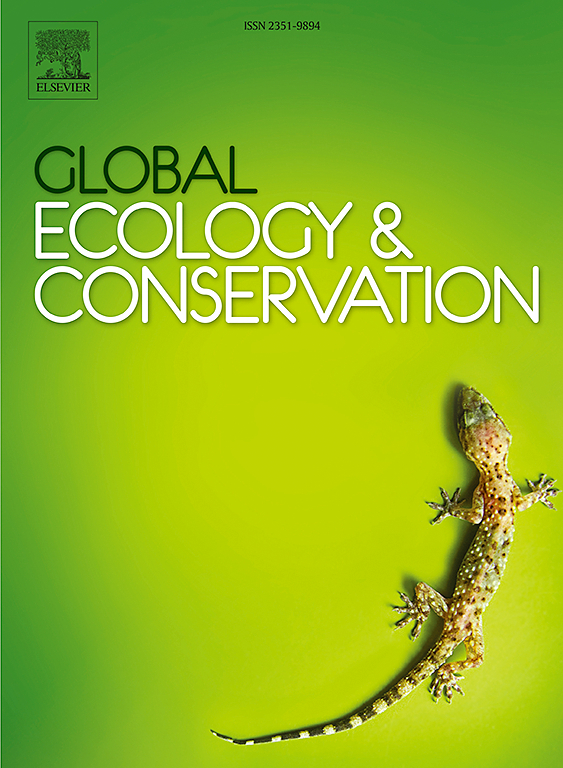Rhizosphere bacterial community structure and nutrient cycling genes jointly drive the soil multifunctionality of Phoebe bournei young plantations under potassium fertilizer
IF 3.5
2区 环境科学与生态学
Q1 BIODIVERSITY CONSERVATION
引用次数: 0
Abstract
Potassium (K) plays a pivotal role in influencing the structure and function of soil microbial communities, thereby influencing soil multifunctionality. Researches on various fertilization practices for Phoebe bournei has primarily focused on microbial communities. However, the mechanism of functional potential of microbe in mediating the influence of K on soil multifunctionality remains insufficiently elucidated. Here, the experiment included five K additions (CK, 0 g; K1, 60 g; K2, 120 g; K3, 180 g; and K4, 240 g per plant) in P. bournei young plantations via 16S rRNA sequencing and quantitative microbial element cycling (QMEC) smart chip technology to investigate the impacts of K additions on rhizosphere soil bacterial community attributes, nutrient cycling genes (carbon, nitrogen, phosphorus), and soil multifunctionality. K additions decreased bacterial diversity, while enhancing the abundance of genes involved in C degradation, including those related to labile and recalcitrant C, as well as N cycling, P cycling, and soil multifunctionality. Comparatively, K1 and K2 additions had slight effects on soil multifunctionality, bacterial communities and the abundance of C, N and P cycling genes. PLS-PM results demonstrated that K additions improve soil multifunctionality indirectly by altering bacterial community structure and network complexity, as well as the functional potential linked to N and P cycling. Additionally, soil abiotic factors are the was the core predictor for maintaining soil multifunctionality. All in all, soil properties and bacterial functional attributes together drive soil multifunctionality in response to K additions. These findings highlight that adequate K fertilizer may maintain soil multifunctionality, and regulate nutrient cycling and bacterial functions in P. bournei young plantations.
求助全文
约1分钟内获得全文
求助全文
来源期刊

Global Ecology and Conservation
Agricultural and Biological Sciences-Ecology, Evolution, Behavior and Systematics
CiteScore
8.10
自引率
5.00%
发文量
346
审稿时长
83 days
期刊介绍:
Global Ecology and Conservation is a peer-reviewed, open-access journal covering all sub-disciplines of ecological and conservation science: from theory to practice, from molecules to ecosystems, from regional to global. The fields covered include: organismal, population, community, and ecosystem ecology; physiological, evolutionary, and behavioral ecology; and conservation science.
 求助内容:
求助内容: 应助结果提醒方式:
应助结果提醒方式:


